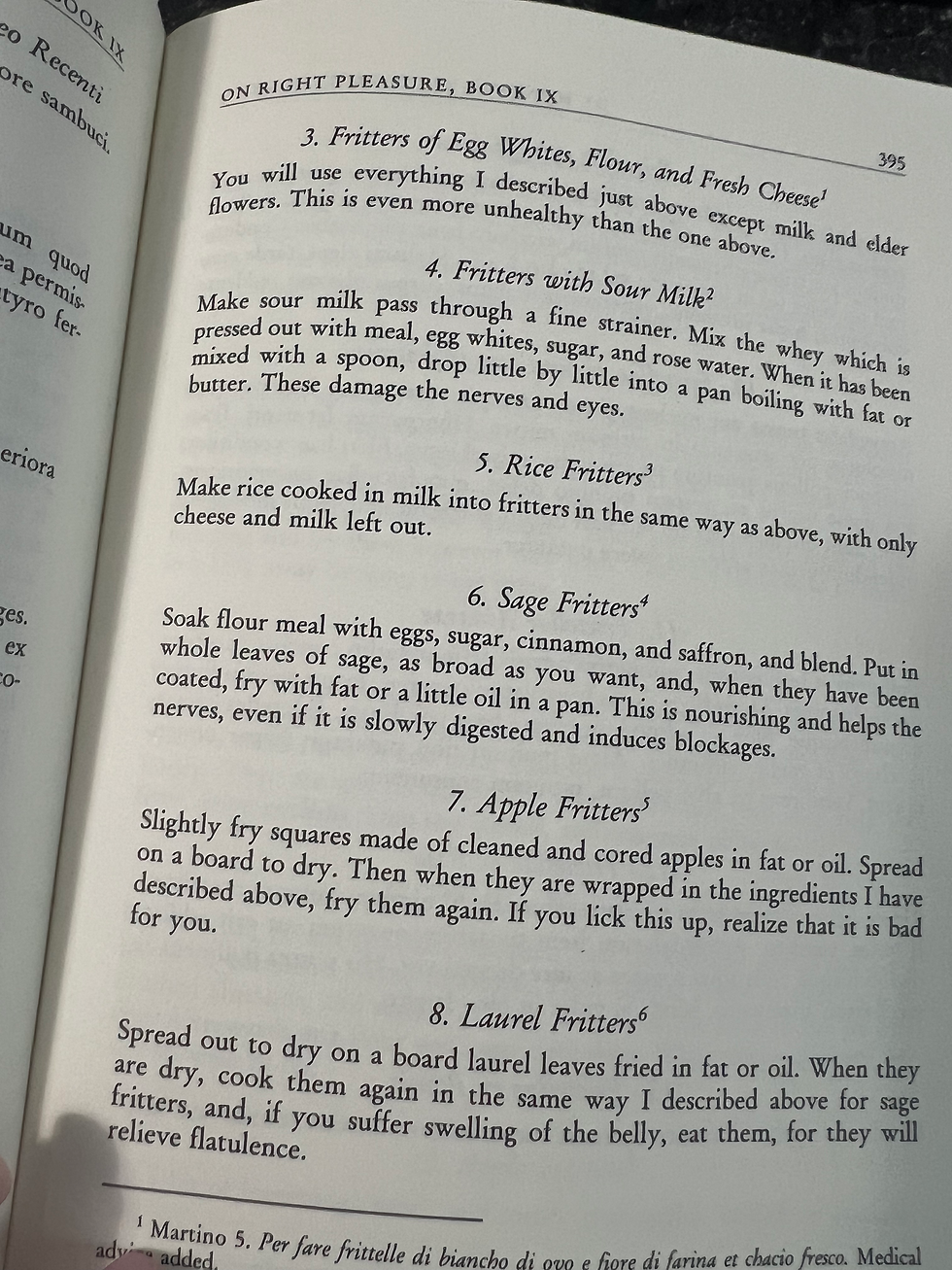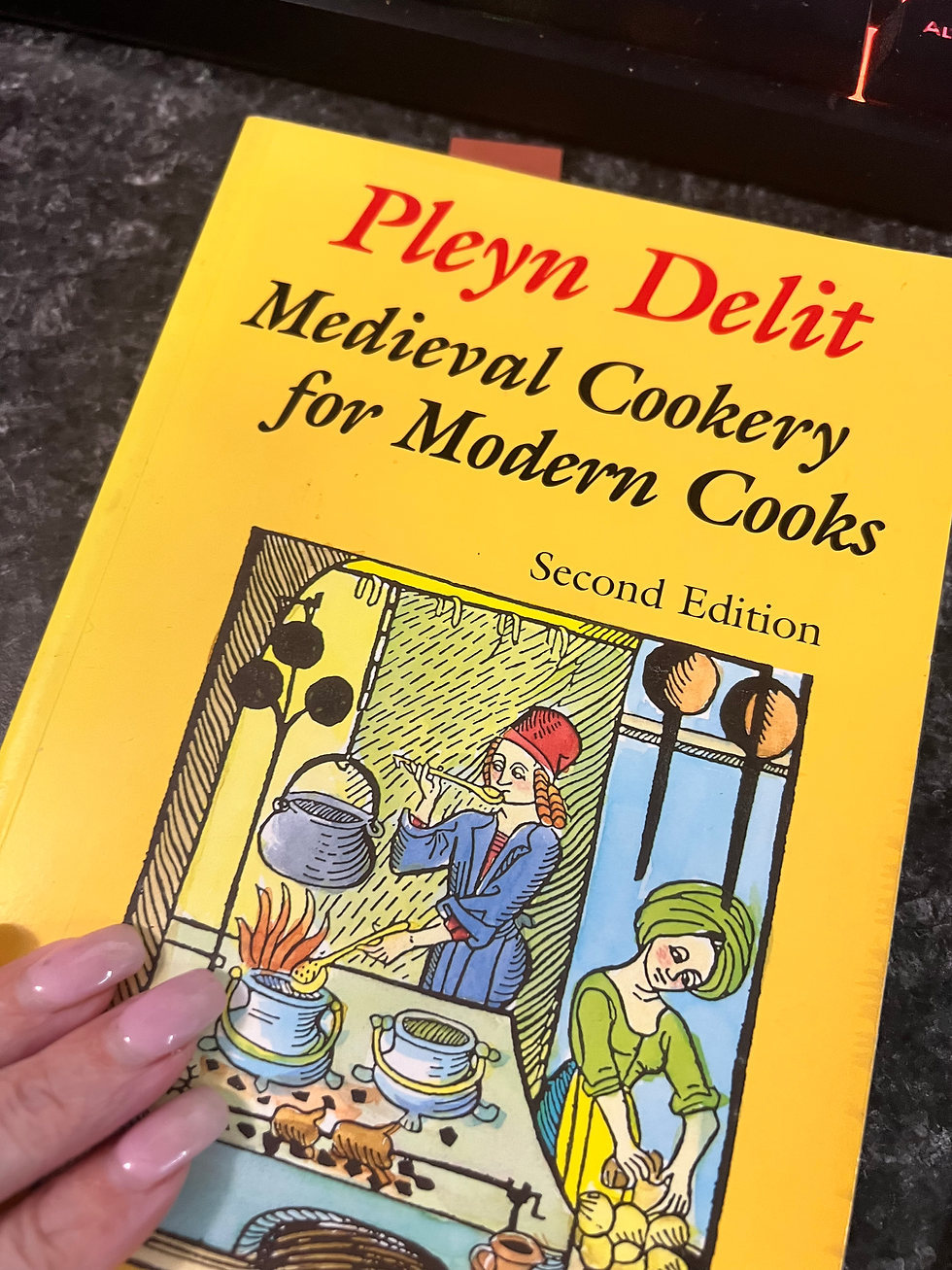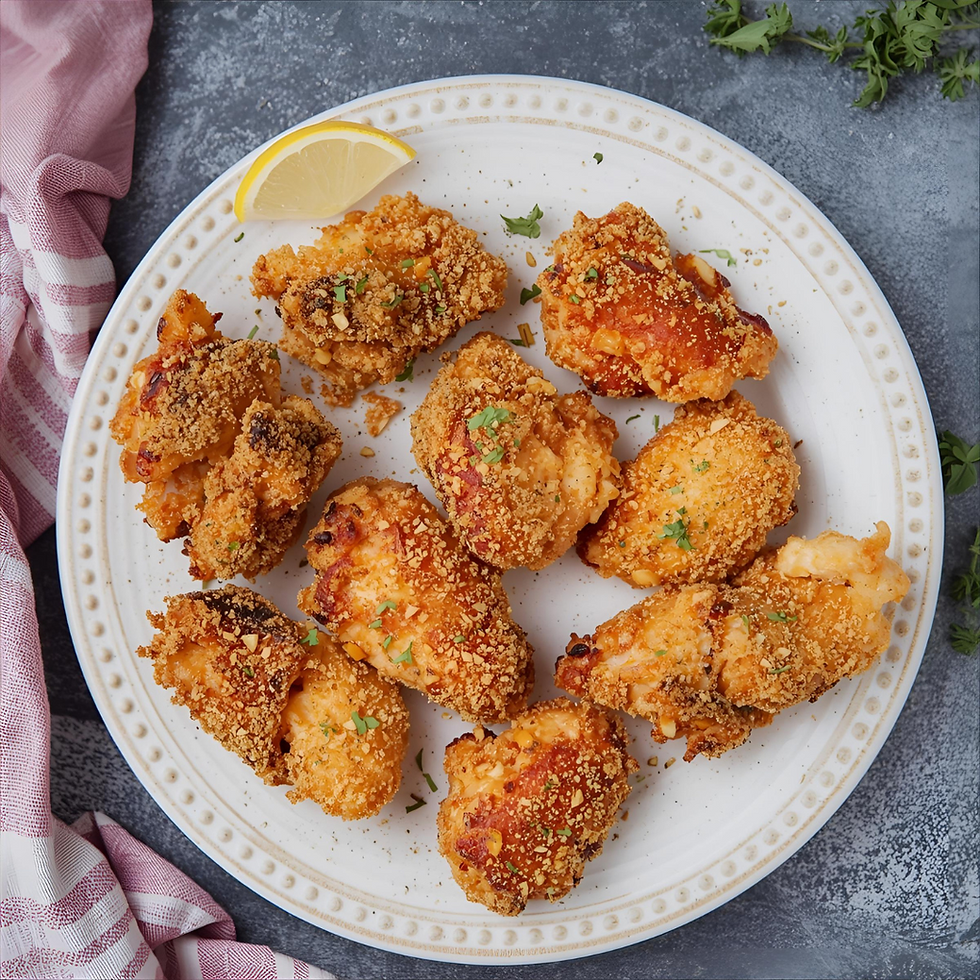The Heritage Table: A History of Fritters — From Medieval Feasts to Market Day Treats
- michel1492

- Jul 24
- 5 min read

Golden and crisp, sweet or savory, fritters are proof that sometimes the best ideas are the simplest. A humble batter, a bubbling pan of fat, and whatever ingredient was close at hand — that’s all it took. But this basic preparation carries a story that threads through centuries of kitchens, from medieval monasteries to Southern potlucks. Fritters are more than just food — they’re flavor, ingenuity, and survival wrapped in a crust.
What Is the Oldest Known Reference to Fritters?
The word “fritter” comes from the Latin frictura, meaning “to fry,” and by the Middle Ages, the concept was firmly in place. Recipes for fritters appear in medieval European texts as early as the 14th century, particularly in English manuscripts like Forme of Cury and The Goodman of Paris.
In Italy, Platina’s On Right Pleasure and Good Health includes recipes where fruits, herbs, or even sage leaves are dipped in batter and fried — sometimes sprinkled with sugar or honey, sometimes served alongside savory sauces.
Fritters were both flexible and festive. They made use of ingredients that were seasonal or leftover, and were often served on feast days or market days when the pan of lard was already hot and the house was full.
Did You Know?
In medieval Europe, fritters were often cooked in animal fat and sweetened with sugar or honey, even when made with savory ingredients like cheese, herbs, or fish.
When Did Fritters Become a Technique?
Frying was once a luxury. Oil was costly, and only wealthy households could afford to fry foods frequently. But by the Renaissance, the method had spread, and cookbooks across Europe featured detailed fritter instructions. Batter techniques became more refined—yeasted, enriched with eggs, or scented with spices like cinnamon and ginger.
By the 17th and 18th centuries, fritters were common across many cultures. From apple fritters at a French countryside table to hush puppies in the American South, each region adapted the technique to local ingredients.
Women and Fritter Traditions
Fritters are part of a long legacy of women’s cooking — practical, seasonal, and delicious. In many households, fritters were a way to stretch ingredients: a bruised apple, leftover mashed beans, a handful of herbs. Nothing went to waste.
In Appalachian kitchens, corn fritters flavored with onion and salt were standard fare. Across the African diaspora, the influence of akara (black-eyed pea fritters) and banana fritters made their way into Southern cooking, blending cultural memory into something warm and golden.
These recipes were rarely written down. They were handed from mother to daughter, friend to neighbor, pan to plate.
Did You Know?
The word “fritter” can also describe street snacks in many cultures — from Jamaican saltfish fritters to Indian pakoras to French beignets.
Fritters, Preservation, and Flavor
Fritters offered more than just an easy meal. In some cases, they preserved ingredients — frying helped extend the shelf life of perishable items. In cold months, dried apples could be soaked and battered; in spring, herbs were chopped into doughs and fried crisp.
Seasonings were key. Medieval cooks often blended warming spices like nutmeg and clove into their batters, especially for sweet fritters. Modern variations are just as creative, featuring everything from chili flakes to curry powder to floral blends.
A Renaissance in the Modern Kitchen
Fritters have come full circle. In farmers market stalls, food trucks, and TikTok kitchens, they’re back — now crisped in air fryers or dressed in aioli. Whether you’re making corn fritters with scallions or ricotta fritters with honey, the possibilities are endless.
Today, chefs reimagine them as elegant starters or nostalgic treats. And with the right seasoning, they go from rustic to remarkable.
Did You Know?
The apple fritter became a staple in American diners in the 20th century — a nod to colonial-era recipes sweetened with molasses, fried in lard, and eaten piping hot.
A Global Tradition with Local Flavor
Like compound butter, fritters adapt. They pick up the character of every culture they touch:
France: Beignets, both sweet and savory
Italy: Zeppole and frittelle of herbs and vegetables
Spain & Portugal: Buñuelos, often flavored with anise or citrus
Africa: Akara (bean fritters), banana fritters, cassava fritters
India: Pakora and bhaji made with chickpea flour
United States: Apple fritters, corn fritters, and hush puppies
Two Fritter Recipes with Oak City Spice Blends
Sweet Fritter: Apple Fritters with 1st Day of Autumn
Warm • Comforting • Spiced
Ingredients
2 medium apples, peeled and diced
1 cup all-purpose flour
2 tablespoons sugar
1 teaspoon baking powder
½ teaspoon salt
1 teaspoon 1st Day of Autumn seasoning
½ cup milk
1 egg
Oil for frying
Glaze (optional)
½ cup powdered sugar
1 tablespoon milk or cider
Instructions
In a bowl, whisk flour, sugar, baking powder, salt, and 1st Day of Autumn.
In another bowl, whisk milk and egg. Add to dry ingredients and stir just until combined. Fold in diced apples.
Heat 2 inches of oil in a skillet to 350°F.
Drop spoonfuls of batter into the oil. Fry 2–3 minutes per side until golden.
Drain on paper towels.
Optional: mix powdered sugar with milk and drizzle over fritters while warm.
Best Served With Cider, whipped cream, or beside a morning fire.
Savory Fritter: Garden Herb & Cheese Fritters with Garden Delight
Earthy • Cheesy • Crisp
Ingredients
1 cup grated zucchini (squeezed dry)
½ cup crumbled feta or goat cheese
1 egg
¼ cup chopped green onion or shallot
½ cup flour
1 tablespoon Garden Delight seasoning
¼ teaspoon salt
Oil for frying
Instructions
Mix zucchini, cheese, egg, onion, flour, Garden Delight, and salt until well combined.
Heat oil in skillet over medium heat.
Drop mixture by spoonfuls into hot oil. Flatten gently.
Fry 2–3 minutes per side until golden brown and cooked through.
Drain and serve warm.
Best Served With Yogurt dip, tzatziki, or alongside grilled chicken.
Cookbooks to Explore
Curious to dive deeper into the world of historical fritters and the cooks who loved them? These books offer a rich look at medieval, Renaissance, and early modern cooking — including several original fritter recipes:
On Right Pleasure and Good Health by Bartolomeo Platina
A 15th-century Italian text filled with recipes and health advice. Platina offers detailed insight into early Renaissance cooking, including several recipes for fried herbs and fruits that resemble our modern fritters.



Pleyn Delit: Medieval Cookery for Modern Cooks by Constance B. Hieatt, Brenda Hosington, and Sharon Butler
An essential volume for anyone interested in hands-on medieval cooking. It includes adapted recipes from texts like Forme of Cury, making them approachable for modern kitchens.



The Forme of Cury by The Master Cooks of King Richard II (modern translation by Samuel Pegge)
One of the oldest surviving English cookbooks, with recipes for “fritours” of herbs, cheese, fish, and fruit.
The Goodman of Paris (Le Ménagier de Paris)
A household manual from the 14th century with practical advice and recipes, including detailed menus featuring fritters.
Cooking and Dining in Medieval England by Peter Brears
A scholarly yet accessible deep dive into English medieval foodways. Includes context on frying techniques and feast-day foods.
The Medieval Kitchen: Recipes from France and Italy by Odile Redon, Françoise Sabban, and Silvano Serventi
A beautifully researched book that brings together original texts and modern adaptations, highlighting how fritters fit into daily and festive meals alike.
These books don’t just teach you how to cook — they teach you how people lived. Whether you’re flipping fritters or turning pages, you’re joining a tradition that’s centuries in the making.
Final Thoughts
Fritters are more than just crispy edges and tender centers — they are a reminder of how creativity thrives in simplicity. They whisper stories of feast days, hungry nights, harvest mornings, and shared tables.
So whether you’re frying up a batch of spiced apple fritters with 1st Day of Autumn, or savoring herb and cheese fritters with Garden Delight, you’re not just cooking. You’re reaching back through time, and making something timeless again.




Comments